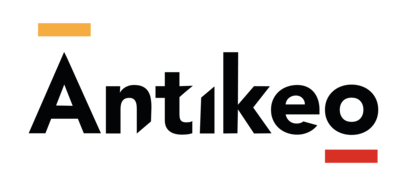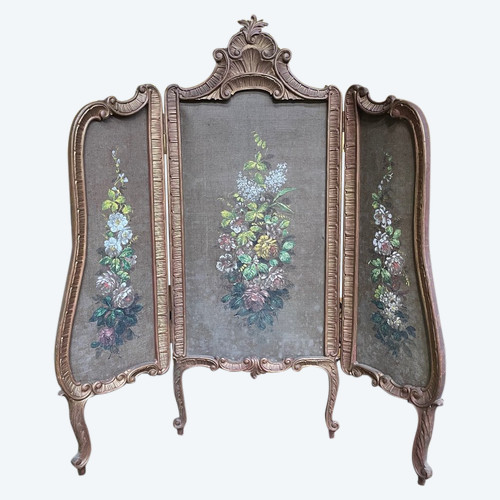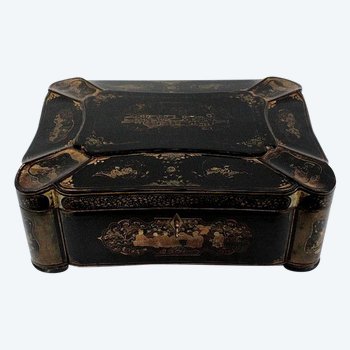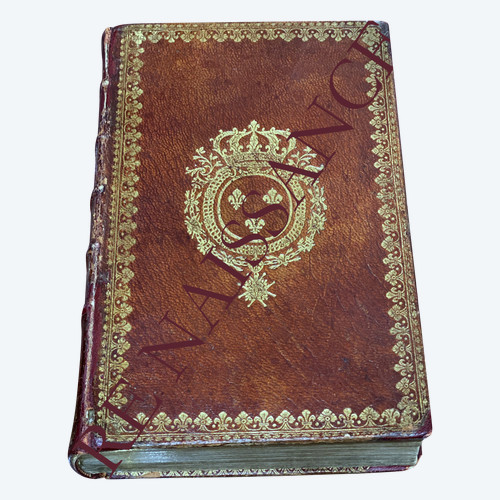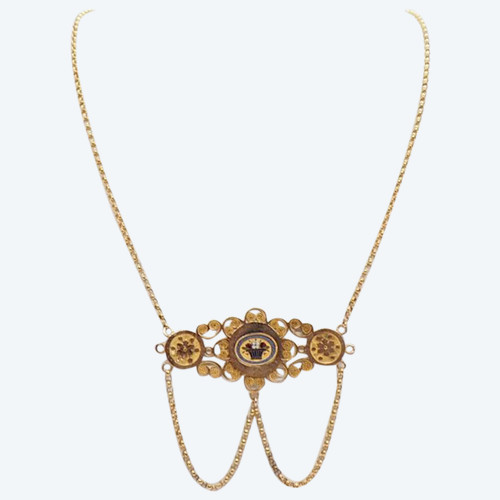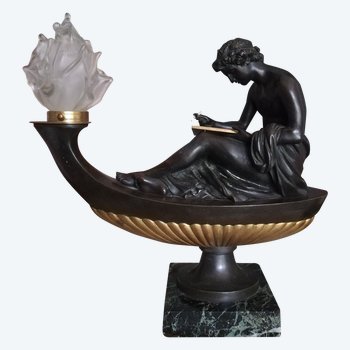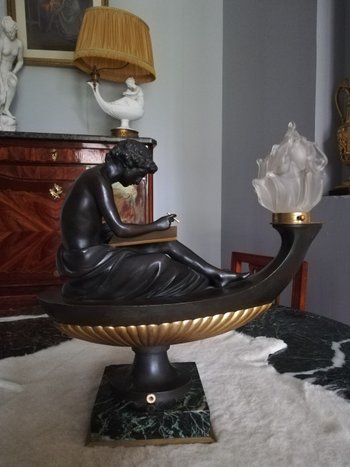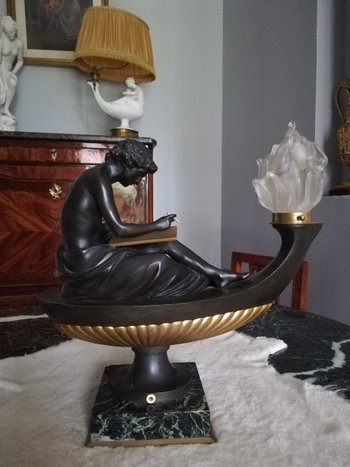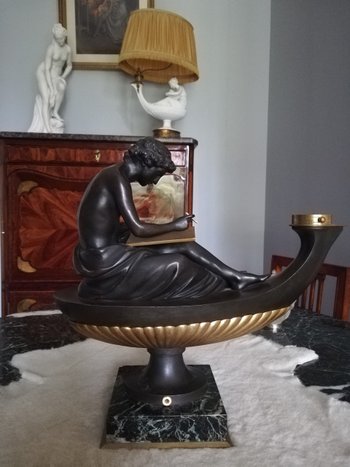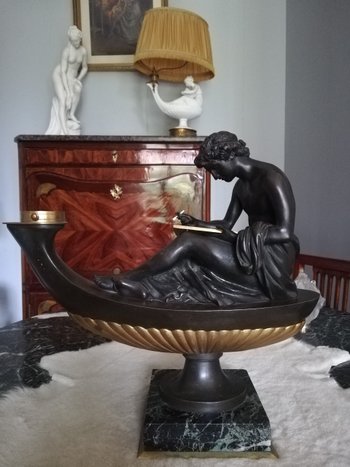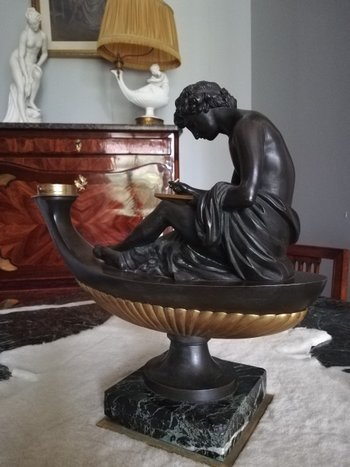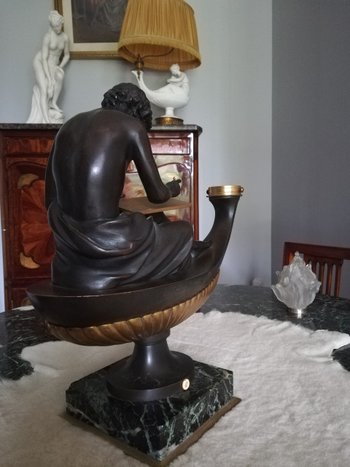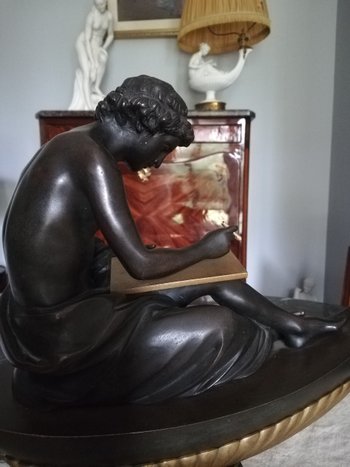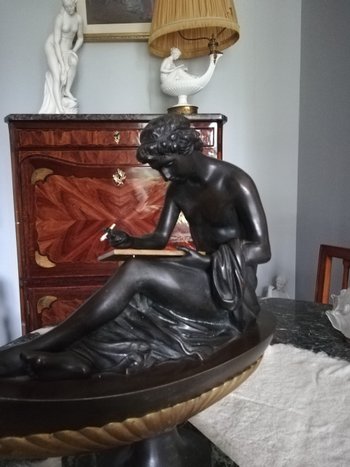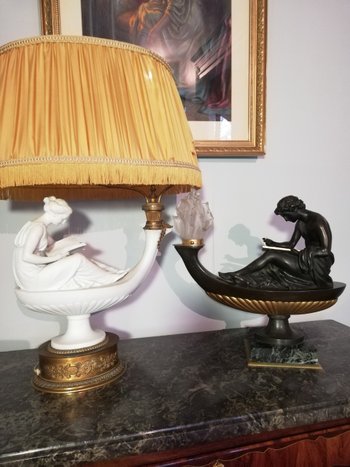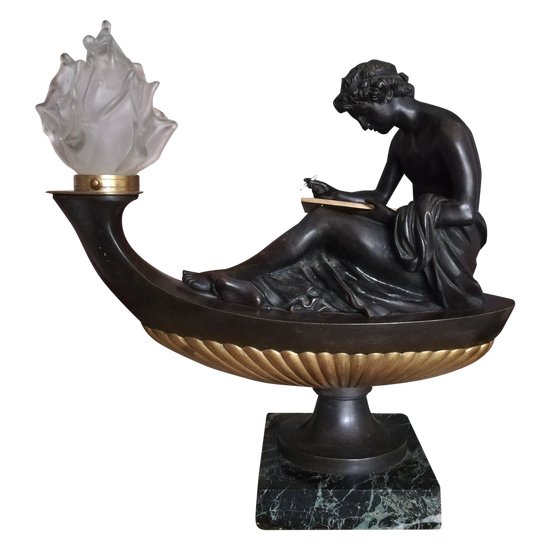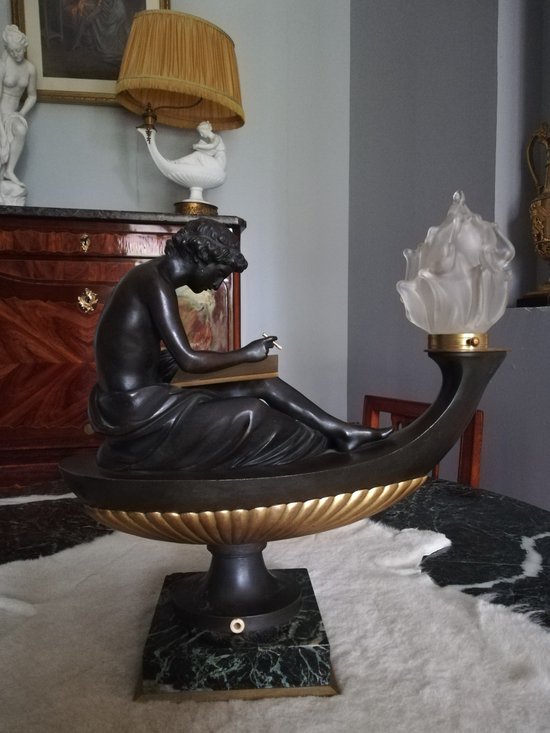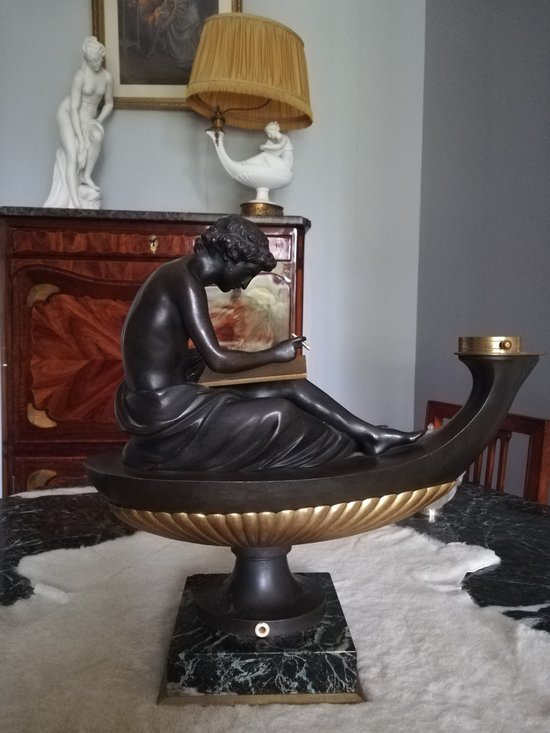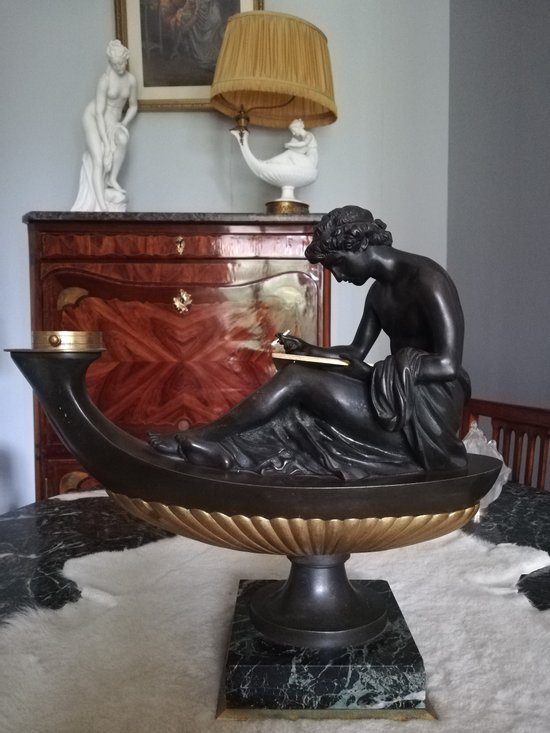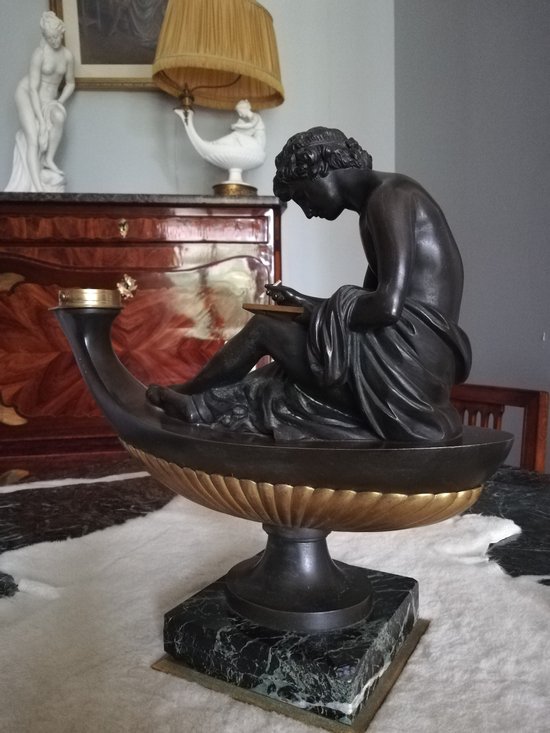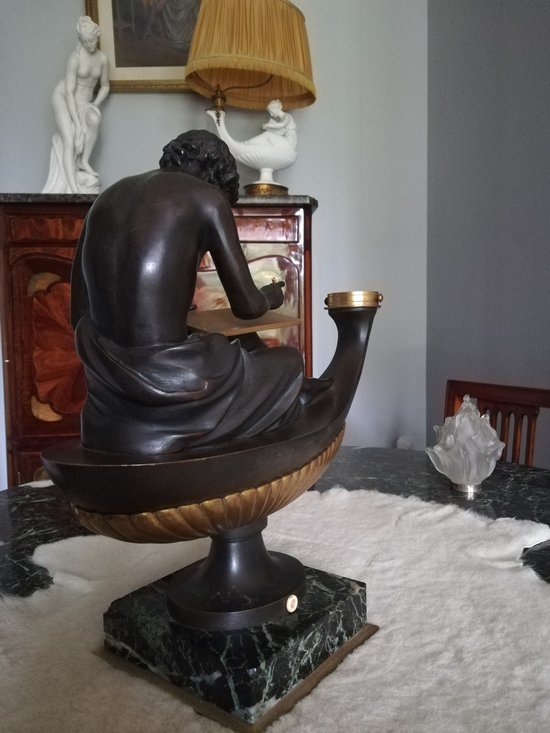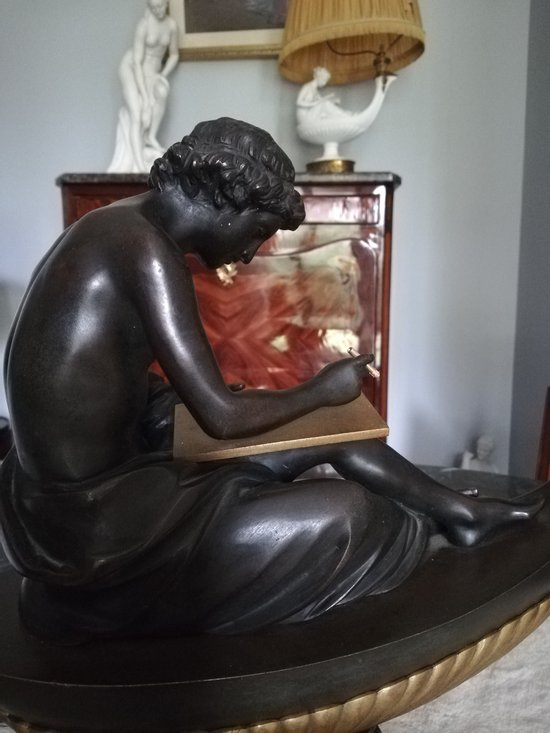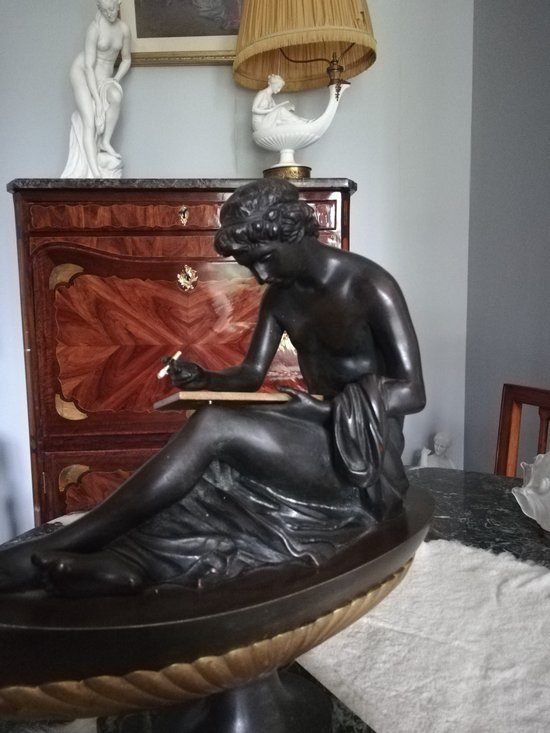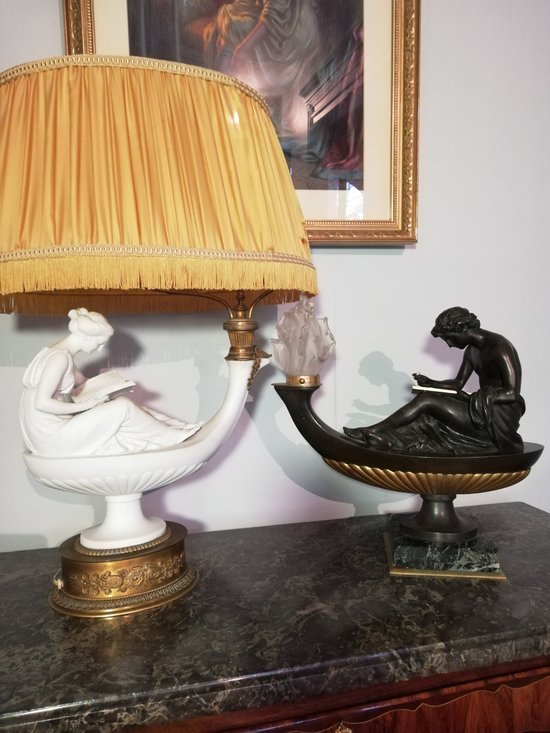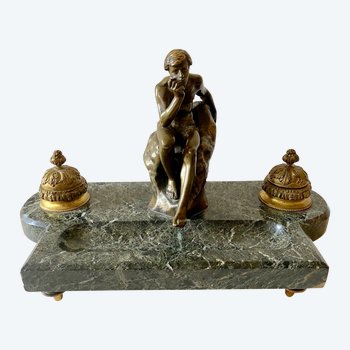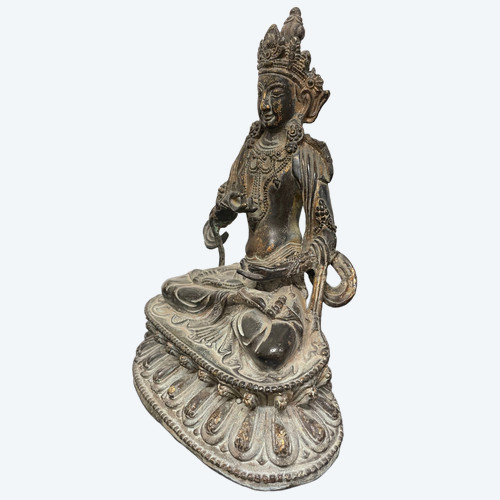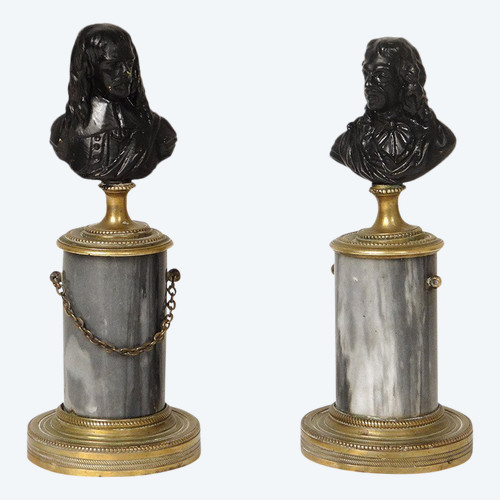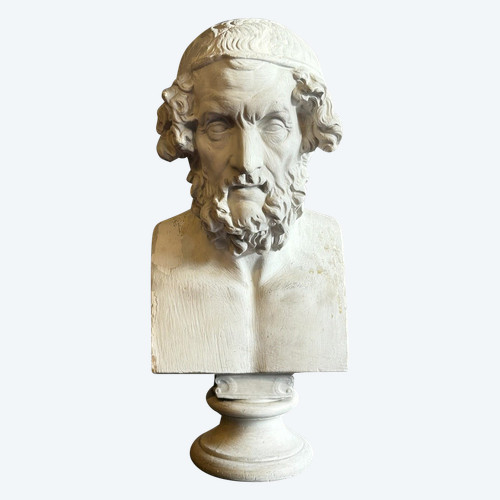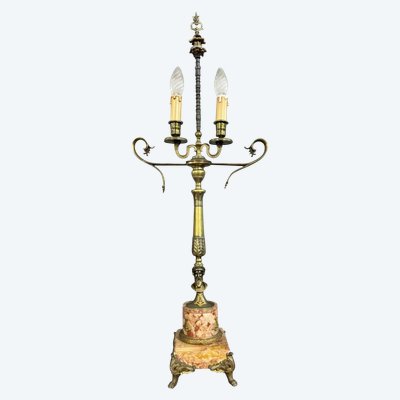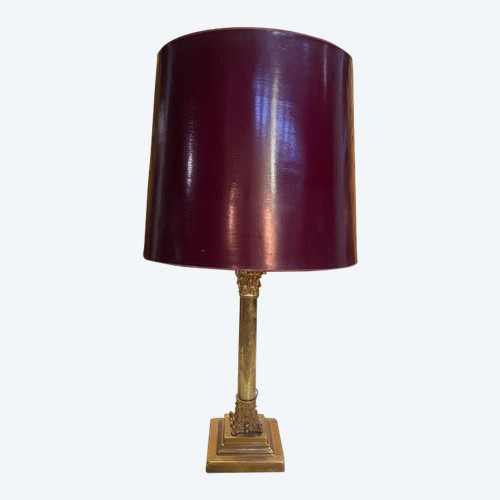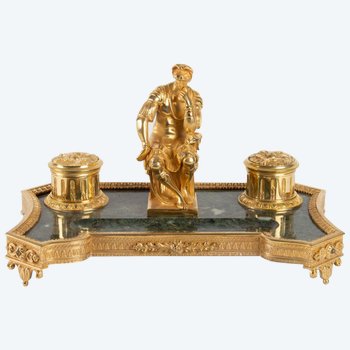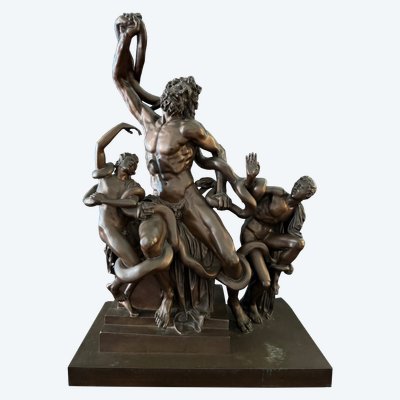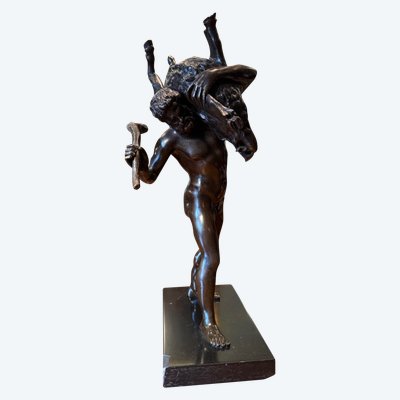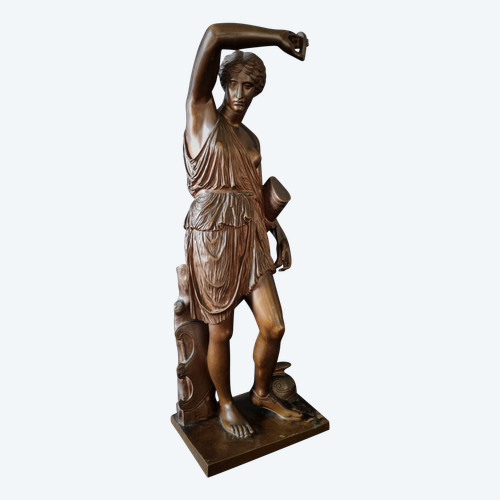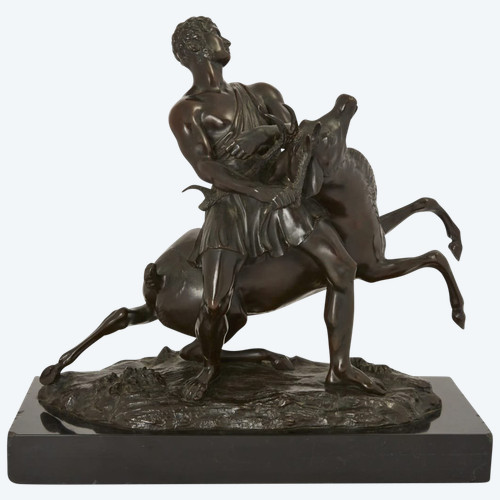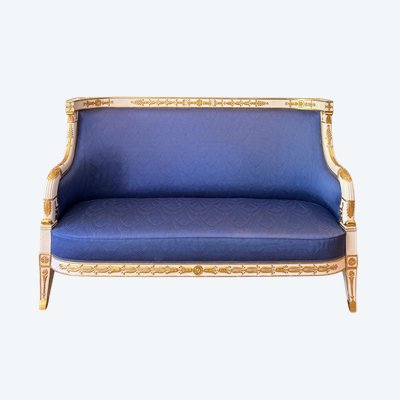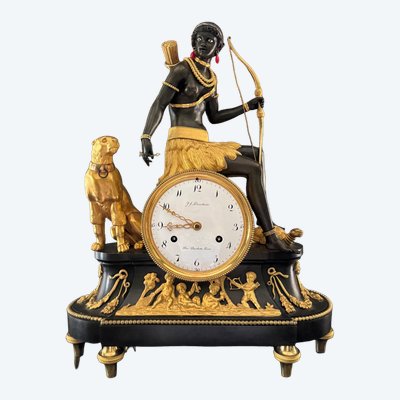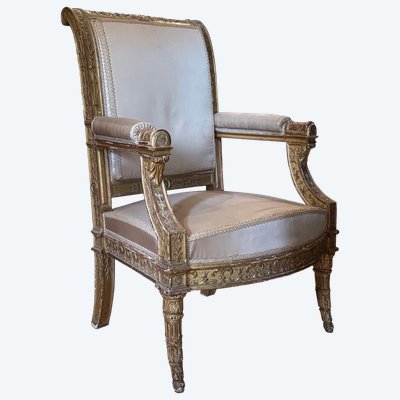This description has been translated and may not be completely accurate. Click here to see the original
Magnificent oil lamp in patinated and gilded bronze on an antique green marble base from the Empire period attributed to Pierre-Philippe Thomire. After a model by Simon-Louis Boizot representing the figure of Philosophy.
The classic male figure, which represents an allegory of Philosophy, was originally modeled by the sculptor Boizot in 1780, who sold it with its counterpart, the Etude, to the Sèvres porcelain factory. This produced them in white biscuit until 1786.
Boizot had been appointed artistic director of sculpture at Sèvres in 1773, and during his career he oversaw the design of more than 150 of his models reproduced in unglazed porcelain.
Like Louis Simon Boizot, Pierre Philippe Thomire also worked at the Sèvres factory, first as an assistant to artistic director Jean-Claude Duplessis in the production of frames for the factory.
After the latter's death in 1783, Thomire took over the work of Duplessis and provided all the gilt bronze supports for the factory's porcelain.
As the Getty cataloging notes, it was probably thanks to his close working relationship with Boizot that Thomire was able to obtain the model, as well as the exclusive sale (with François Rémond) for this allegory and its pendant.
Figures from The Study and The Philosophy became eminently fashionable and were not only reproduced by Sèvres as individual figurines, but also appeared on a series of clock cases by François Rémond (1747-1812), called the pendulum to the Marshals.
Rémond's watercolor of 1785 shows the two seated figures on either side of the clock drum, which in turn is surmounted by an eagle (illustrated in Ottomeyer and Pröschel, op. cit. p. 295, pl. 4.17 .5). Rémond's design stems from an order from the merchant-mercer Dominique Daguerre who, in 1788, supplied two clocks of this model to Louis XVI at Saint-Cloud. In addition to Saint-Cloud, other clocks of the same design can be seen in the British Royal Collection and the Hermitage in Saint Petersburg.
Electrified later, with the addition of a glass flame.
Very good state of conservation.
Empire period.
Note that its pendant, the Study, is available in my gallery. In biscuit porcelain and mounted as a lamp.
Dimensions:
Height 37cm,
width 37cm,
depth 14cm.
Literature :
Hans Ottomeyer and Peter Pröschel, “Vergoldete Bronzen”, 1986, p. 294, pl. 4.17.1, illustrate a gilt and patinated bronze candlestick dating from around 1790, very similar in design with a flame-like finish.
-pl. 4.17.3, illustrate a ca. 1790 gilt and patinated bronze andiron in the Grand Trianon, Versailles, depicting the same male figure of Philosophy seated on an antique daybed.
-pl. 4.17.4, illustrating a portrait of Empress Elizabeth Alexejevna by Jean-Laurent Mosnier, which shows an almost identical L’Étude oil lamp placed on a ledge next to the nurse.
-page 298, pl. 4.18.6, illustrating a pen and ink drawing from the studio of Pierre-Philippe Thomire, circa 1785, in the Musée des Arts Décoratifs, Paris, showing two alternative designs for a number of decorative objects for a fireplace, including a design for a very similar L'Étude oil lamp placed over the fireplace.
The J. P. Getty Museum, in California, has an almost identical oil lamp as well as its companion the Etude dated around 1785 and attributed to the famous founder-carver Pierre-Philippe Thomire (1751-1843) after the model of Simon-Louis Boizot (1743-1809).
Like the piece offered, they were made purely as decorative objects and were not intended to be functional, although models of a similar appearance were in fact adapted to act as candle holders (as illustrated in Ottomeyer, op cit. p. 294, pl. 4.17.1).
Ref: CWGUO9TVRY
 Louis XV Style Firewall Or Screen
900 € EUR
Louis XV Style Firewall Or Screen
900 € EUR
 Enamelled Yellow Gold Necklace
950 € EUR
Enamelled Yellow Gold Necklace
950 € EUR
